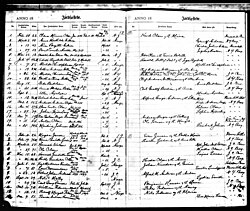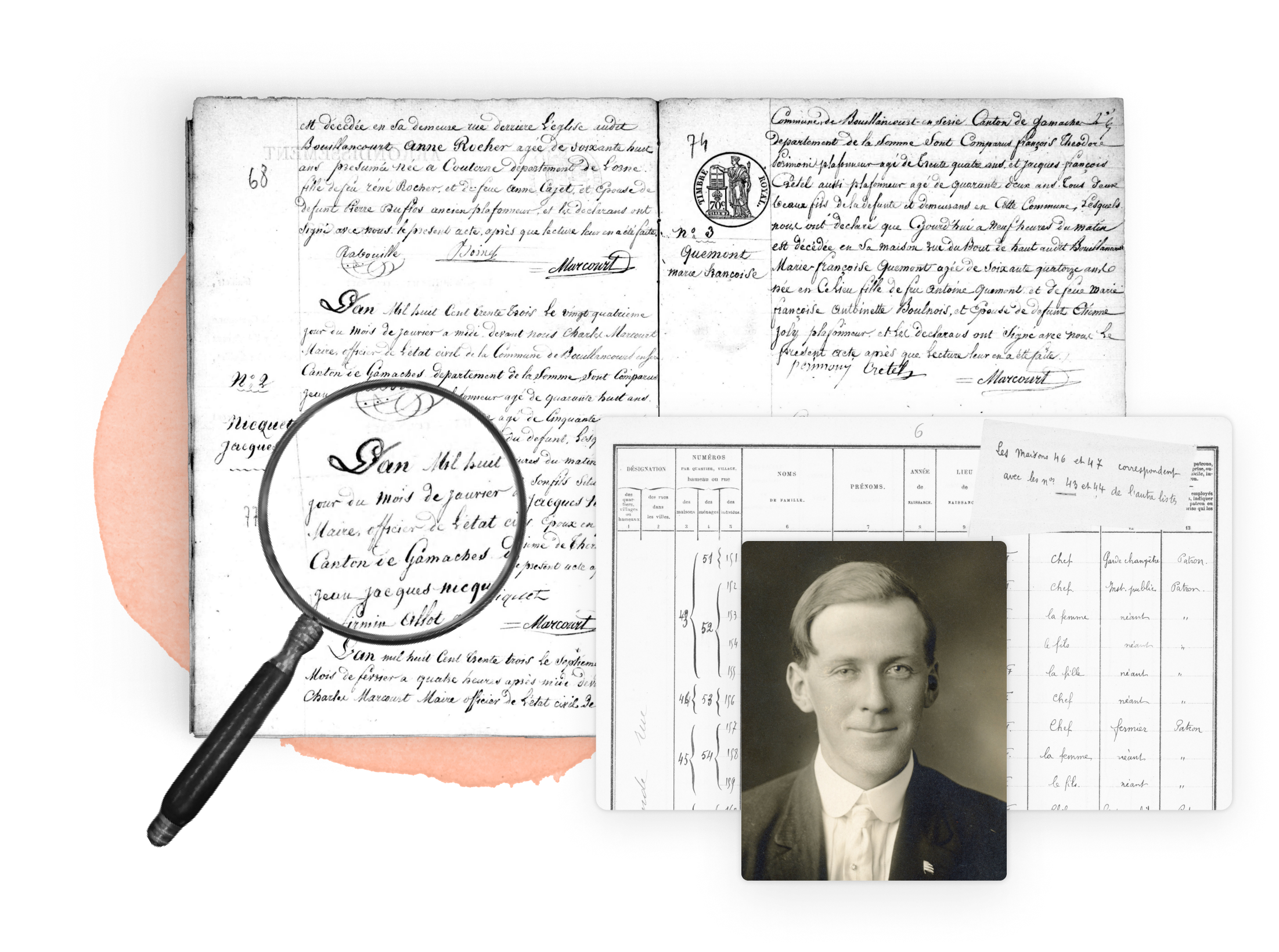
While church records are filled with useful information for genealogists and family historians, they can be difficult to access, both in-person and online. Access to these records are often not controlled by a local, state, or national entity, but by the administrative entities of a religious denomination. Some of these, especially the handwritten ones, are called parish registers or parochial register. Denominations set their own rules in terms of who can access church records and in which manner. And even if the diocese permits access, it can come down to a local church ultimately deciding whether or not access is allowed.
While old church records can be difficult to locate - both in-person and online - the rewards of finding them are endless, permitting the family history structure of a specific community to be reconstituted many centuries back in some cases. Church records contain important information not only to prove basic genealogical information, but also to shed light on the lives and relationships of the members of the community.[1] Microfiche copies of parish registers, along with transcriptions, are generally available at main libraries and county record offices.
Research your ancestors on MyHeritage
What’s included in church records

Church and parish records contain the names of congregation members, and possibly even records of baptisms, christenings, marriages, and deaths and burials.The content of a church record is based on a series of variables: the church event or sacrament, the denomination, the person or persons involved, and more. For Catholic churches you are likely to find the following records and information:
- Baptism: name of child, birth date and location, names of parents, baptism date and location, name of priest, names of godparents/sponsors.
- Confirmation: name of candidate, confirmation date and location, confirmation name, name of bishop, name of sponsor.
- Marriage: name of spouses, marriage date and location, name of priest/officiant, name of witnesses.
- Last Rites / Death: name of decedent, death date and location, name of priest, funeral date and location, burial date and location.
Often, there are no burial records for Catholic churches since burial is not considered a sacrament. For other Christian denominations, you will typically find baptism, marriage, and death records.
Other church records
These often overlooked church records may contain information about your ancestors:
- Membership rolls: some churches maintained a list of current and new members.
- Pew/seat rental records: in some churches members had to pay to reserve a specific seat or row of seats, often marked with the family name and a plaque.
- Special donation records: a special donation to a church such as a stained glass window or a baptismal font would be marked with the donor’s name.
- Church bulletins: starting in the mid-20th century, churches published weekly or monthly newsletters/bulletins listing new members, members who married or died, committee chairpersons, and events.
Church records at MyHeritage
When working with most of the church records at MyHeritage, you can search on the following fields:
- Name
- Birth date and birth place
- Sex / Gender
- Marriage date and marriage location
- Death date and death location
- Residence
- Parents
- Spouse
- Child
- Sibling
- Military status
- Immigration event
Language and handwriting issues

Church records can often be difficult to use due to barriers created by language and handwriting. Even German or Polish Catholic church records will be written in Latin and not the local language. Learning basic Latin terms used in church records will help you gather information from these records. In addition, the handwriting of the recordkeeper can vary from clear and easy-to-read to barely legible. Use some of the resources below to understand handwriting and abbreviations used on church records.
Tips and tricks for researching church records
- Start with the local church. The first place to look for church records is the church where your ancestor(s) worshiped. Many churches keep records of baptisms, marriages, and funerals for many years. You can contact the church to see if they have any records that you can look at.
- Don’t visit a church without calling first. Don’t rely on a church’s website for information; often websites are not up-to-date. Make a telephone call and simply ask if their records are available for research. Do not tell THE STORY (meaning, the story about your ancestor, why they attended that church, etc.).
- Also ask if you should put your request in writing. If so, write a concise request listing names, dates, and other information to assist in locating the record. Again, the staff at the church are not interested in The Story.
- Consider making a small donation ($20 USD) to the church, even if it isn’t your church or your denomination. Remember, your request means a staff member has to take time from their other duties at the church office.
- Don’t make assumptions about the location of the church. If you do not know the name of the church or the parish, don’t just assume your ancestors attended the closest church. Look at a topographical map. While a specific church is closest in terms of distance, there may have been a difficult route used to get to it.
- Contact the regional or national church organization. If your ancestor(s) belonged to a denomination with a regional or national organization, you can contact that organization to see if they have any records that you can look at. For example, if your ancestor(s) were Catholic, you could contact the Catholic Church's archives.
- Visit a genealogical library. There are a number of genealogical libraries that have collections of church records. These libraries can be a great resource for finding records that are not available online.
- Check Google Books and other digital library sites. Church records were often compiled into books during the late 19th and early 20th centuries. Use Google Books, Internet Archive, and similar websites to discover information on specific sets of church records.
- Visit religious archives. Many denominations maintain national and even regional archives that are accessible to the public, often by appointment.
- Be prepared to provide as much information as possible about your ancestor(s). This includes their name, date of birth, date of death, and the church where they worshiped.
- Be patient. It can take time to find old church records. Don't give up if you don't find what you're looking for right away.
See also
Explore more about finding old, obscure church records
- MyHeritage Church Records collection at MyHeritage
- MyHeritage tools for members of the LDS church on the MyHeritage Knowledge Base
- The Three Cs of Irish Research: Civil Registration, Church Records, and Census at Legacy Family Tree Webinars
- Using Church Records to Identify Ancestors at Legacy Family Tree Webinars
- Zigzagging through German Church Records at Legacy Family Tree Webinars
- ArchiveGrid - Church Records
- Church and Synagogue Records for Genealogy - Library of Congress
- The Genealogist’s Guide to Church Records - Family Tree Magazine
- A Genealogist’s Guide to Old Latin Terms & Abbreviations - GenealogyBank
- Hathi Trust
- Internet Archive - Texts
- PERSI Church Records
- Symbols on Catholic Church Records
- US Church Records - FamilySearch
- WorldCat - Church Records
References
- ↑ Pounds, N.J.G. A History of the English Parish: The Culture of Religion from Augustine to Victoria. p. 290.


